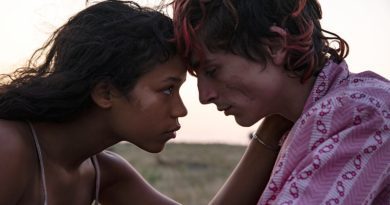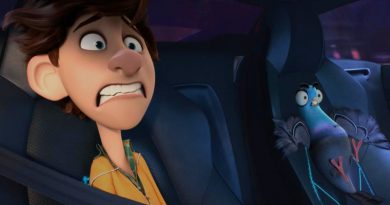Ghostbusters & Gremlins 40th Anniversary Reviews: Revisiting the Double Genre Classics
Ghostbusters and Gremlins are two of the most iconic horror comedies of the ’80s era and even beyond. Not only did these genre classics become pop-culture phenomenons but also influenced many movies for better or worse. The success of Ghostbusters spawned the likes of Men in Black, Evolution and RIPD. Gremlins, in the meantime, bred similar movies from Critters to Ghoulies, Munchies and Hobgoblins.
Believe it or not, Ghostbusters and Gremlins weren’t just top box-office hits during the summer movie season of 1984 but also happened to be released on the same day. It was June 8, 1984, to be exact. I can imagine the euphoric feeling of watching both movies in the cinema at the time. Ghostbusters emerged as the winner here, enjoying the No. 1 spot in the U.S. box office for seven consecutive weeks. Gremlins was no slouch either and despite standing behind the former’s shadow, it did equally good business staying at No. 2 for six weeks in a row.


Let’s start with Ghostbusters, the effects-laden supernatural/horror comedy that cost the studio (Columbia Pictures) a then-hefty budget of an estimated US$30 million. It was a risky investment but it paid off handsomely and frankly, it’s hard to imagine director Ivan Reitman and his three main stars: Bill Murray, Dan Aykroyd and Harold Ramis managed to beat the odds and gave us such a certified classic.
Those odds in question? The cast and crew had to endure through the rushed production to meet its 13-month deadline from the day Ghostbusters was greenlit. The original script for the movie was different from what we saw in the finished product. Dan Aykroyd initially presented his idea about the ghostbusting team set in outer space and in the future too.
But such a high-concept premise means it’s going to need a lot of special effects and a bigger budget to bring Aykroyd’s idea to fruition. It didn’t work out as planned, especially with the special effects technology that wasn’t as advanced back in the day. Reitman along with Aykroyd and Ramis had to do the impossible: coming up with a new script that was doable, resulting in a major plot change from the space setting to the New York City location. The script retained the basis of the characters catching ghosts, albeit with scaled-down special effects and pyrotechnics to accommodate the budget. The rest, as they say, is history.
Even with Aykroyd and Ramis’s script being earthbound, Ghostbusters still excels in its creativity and imagination. It was a cool idea watching the two first-generation SNL alums (Aykroyd and Murray) and Ramis, who already made his mark writing comedy classics like National Lampoon’s Animal House and Meatballs in the ’70s, wearing beige jumpsuits and strapping backpack-style proton packs that fire energy streams from its particle throwers a.k.a. proton blasters. These streams help to capture ghosts before they beam them down into a Ghost Trap.
The ghostbusting action is restricted to two major set pieces, one of which takes place in the Sedgewick Hotel after the three Ghostbusters get their first official job to capture the floating green slob nicknamed Slimer. Earlier in the movie, Reitman effectively combines the eerie vibe of horror with a comedy during the memorable New York Public Library’s basement scene.
The movie culminates in a showdown atop the building of 550 Central Park West as the Ghostbusters including a newbie, Winston Zeddemore played by Ernie Hudson deal with the main antagonist Gozer (Slavitza Jovan) and her monstrous dog-like minions, Zuul and Vinz. Not to mention the unforgettable appearance of the gigantic Stay Puft Marshmallow Man a.k.a. Mr Stay Puft terrorising New York City. Amazingly, this iconic monster is a result of all things practical effects using a mix of puppeteers, specially designed suits and nearly 45 kg (!) of shaving cream. Even a minor special-effect moment like the eggs jumping over the carton that startled Dana (Sigourney Weaver) in her apartment remains technically impressive even re-watching the scene today.
Another part of the movie’s success lies in the terrific casting of Dan Aykroyd, Harold Ramis and particularly, Bill Murray in his hilariously deadpan best as Peter Venkman. They share great on-screen chemistry and above all, their comedy banters hit the spot as they improvised their lines both heavily and successfully. The movie also featured an equally memorable supporting cast including Sigourney Weaver as Peter’s love interest, Rick Moranis as Dana’s dorky neighbour and Ernie Hudson as the everyman fourth Ghostbusters, Winston Zeddemore. Let’s not forget about William Atherton as the disdained EPA inspector, Walter Peck.


Next is Gremlins, the iconic horror comedy that gives us the cute and cuddly Mogwai and the wickedly evil title characters. The movie marks the fourth feature for Joe Dante, who already had two genre classics, Piranha (1978) and The Howling (1981) under his belt.
Interestingly, then-unknown young screenwriter Chris Columbus wrote a spec script that he got the idea of Gremlins after hearing mice running around his New York apartment floor at night. He wanted it to be a straightforward horror film. Still, after Steven Spielberg bought the rights and Dante was enlisted to direct the movie, the script has since undergone several drafts before it became the beloved horror-comedy we know today.
Gremlins gets off to a foreboding start after inventor Randall Peltzer (Hoyt Axton) visits an antique store in Chinatown one night and finds a cute, furry creature called Mogwai. He wants to buy it as a Christmas gift for his son, Billy (Zach Galligan) but the elderly owner (Keye Luke) insists it’s not for sale. However, the owner’s grandson (John Louie) sneakily smuggled Mogwai out of the store and sold it to Randall. He warns him of three simple rules that Randall must follow at all costs:
Owner’s Grandson: Look, mister. There’s three rules you’ve gotta follow.
Randall: Yeah, what kind of rules?
Owner’s Grandson: Keep him out of the light. He hates bright light, especially sunlight. It’ll kill him. And keep him away from water. Don’t get him wet. But the most important rule, the rule you can never forget no matter how much he cries or how much he begs… never, never feed him after midnight. You got it?
Randall: Sure, kid. Whatever you say. Hey, listen, thanks. And have a Merry Christmas.
Everything goes well at first after Randall returns to his home in the (fictional) small town of Kingston Falls. His son, who works as a bank teller, is happy with the Mogwai gift while his father named him “Gizmo”. It wasn’t until one night when Billy’s friend, Pete (Corey Feldman) stopped by his place and accidentally spilt a glass of water on Gizmo.
What happens next is an eventual series of misfortunes, leading to the cocoons and hatchings of the ugly little monsters a.k.a. Gremlins as they start wreaking havoc in the otherwise peaceful town.
Gremlins benefits from Dante’s genre know-how direction on effectively blending creature horror with elements of dark and quirky comedies. Legendary Chris Walas’s creature design is the result of amazing puppetry and animatronic work. The old-school practical effects still impress me even after re-watching it today. Looking back, the movie’s deceptively “family-friendly” PG rating is in reality, mean-spirited and violent. The first time Billy’s frightened mum (Frances Lee McCain) encounters the mischievous Gremlins in her kitchen, there’s one point where one of them ends up splattering itself into pieces inside the microwave oven.
The movie also embraces its sneaky nature when you least expected it. Like how Phoebe Cates, who plays Billy’s love interest, Kate reveals why she hates Christmas so much with her morbid backstory involving her father dressing up as Santa Claus. Credits also go to some of Dante’s memorable set pieces, notably my personal favourite on the poor old lady on a chair of an out-of-control stair lift.




